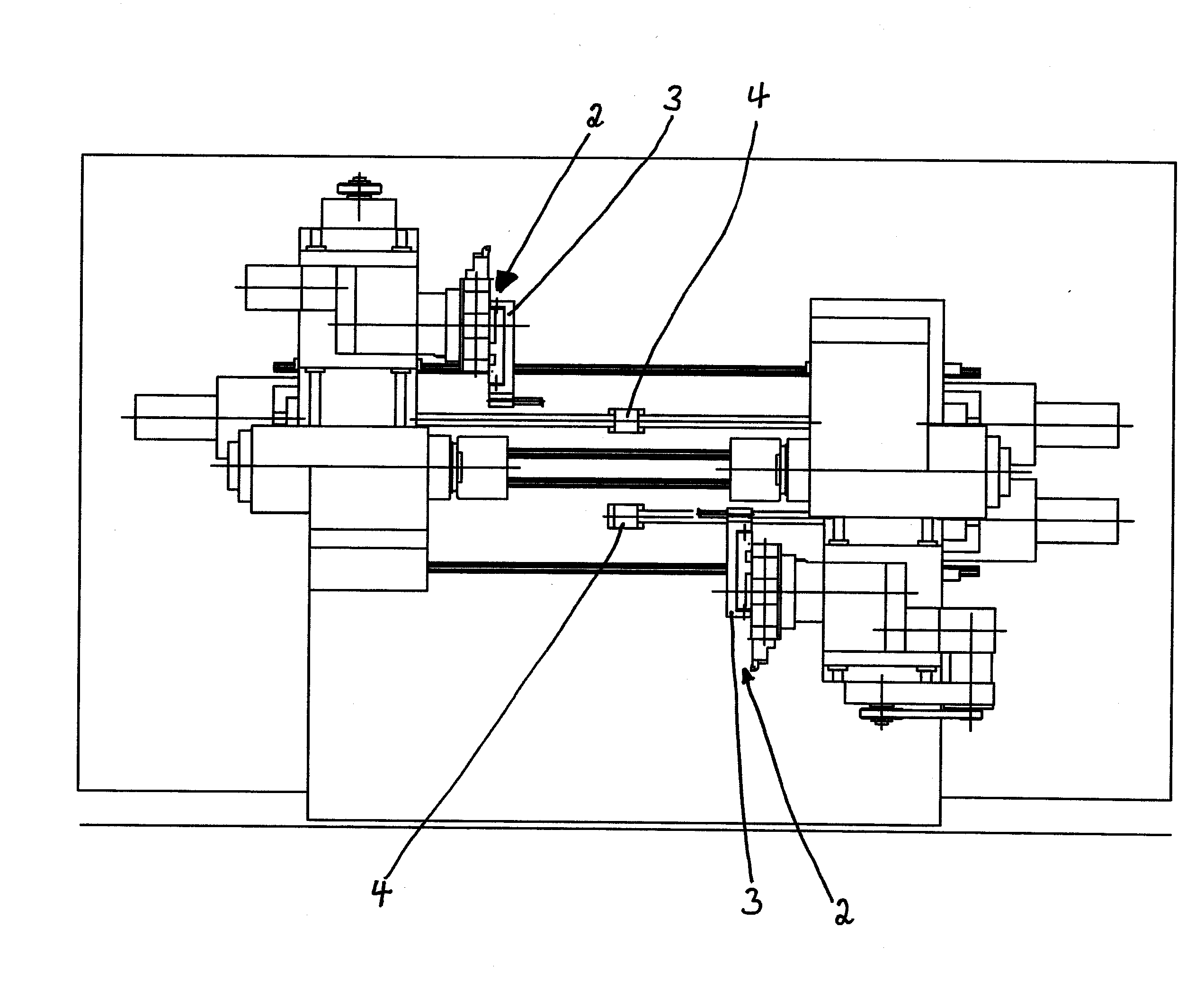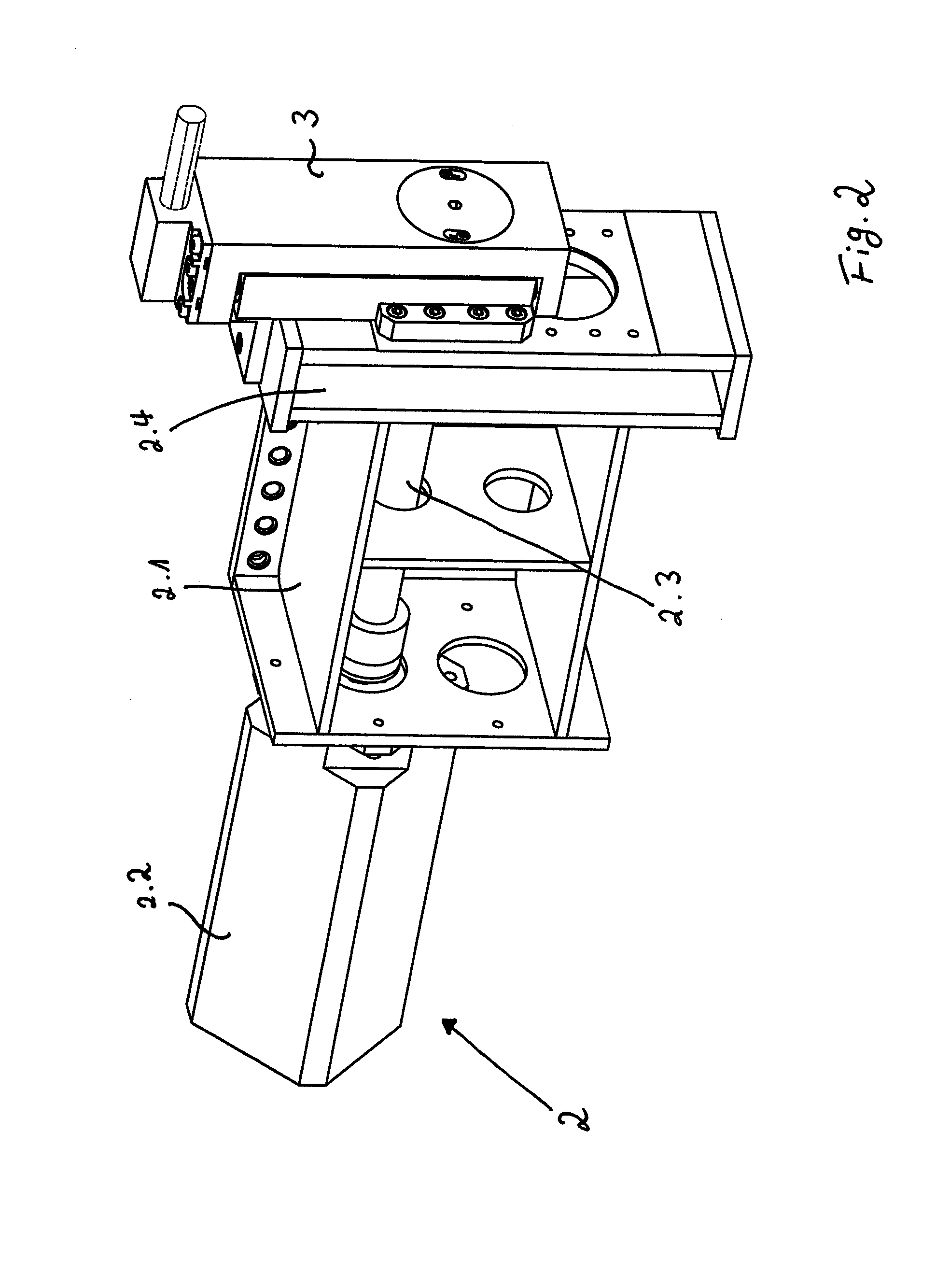Process and Device for Producing Threads, Especially for Boring Rods or the Like
a technology of grinding rods and grinding wheels, which is applied in the direction of turning equipment, milling equipment, worms, etc., can solve the problems of long metal chips, difficult control, and unsuitability of workpieces machined at higher speeds, and achieve the effect of increasing productivity
- Summary
- Abstract
- Description
- Claims
- Application Information
AI Technical Summary
Benefits of technology
Problems solved by technology
Method used
Image
Examples
Embodiment Construction
[0036]Referring to the drawings in particular, FIG. 1 shows a schematic view of a lathe 1 with two threading means 2, so that two threads can be turned simultaneously on this lathe. Lathe tools 4 are arranged on the threading means 2 at the cam part 3.
[0037]FIG. 2 shows a perspective view of a threading means 2 with a holding part 2.1, a motor operator acting as a drive motor 2.2, a drive shaft 2.3, a coupling unit 2.4, and the cam unit 3 proper.
[0038]FIG. 3 shows a longitudinal section through the threading means 2 according to FIG. 2, wherein the parts already named are named in the same manner.
[0039]The cam unit has a holding part 3. 1, which is rigidly connected to the coupling unit 2.4 and in which a cam plate 3.2 connected to the shaft 2.3 is rotatable. The holding part 3.1 carries, in a manner yet to be described more specifically, a slide 3.3, which can be displaced at right angles to the axis of the cam plate 3.2 and in the longitudinal direction of the holding part 3.1, an...
PUM
| Property | Measurement | Unit |
|---|---|---|
| Force | aaaaa | aaaaa |
| Frequency | aaaaa | aaaaa |
| Velocity | aaaaa | aaaaa |
Abstract
Description
Claims
Application Information
 Login to View More
Login to View More - R&D
- Intellectual Property
- Life Sciences
- Materials
- Tech Scout
- Unparalleled Data Quality
- Higher Quality Content
- 60% Fewer Hallucinations
Browse by: Latest US Patents, China's latest patents, Technical Efficacy Thesaurus, Application Domain, Technology Topic, Popular Technical Reports.
© 2025 PatSnap. All rights reserved.Legal|Privacy policy|Modern Slavery Act Transparency Statement|Sitemap|About US| Contact US: help@patsnap.com



